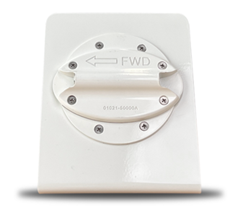FLYHT Aerospace Solutions has been awarded contracts by NOAA to provide its water vapor sensor technology to help the US NWS improve weather forecasting and warnings. The contracts are valued at US$500,000, with an additional US$2.8m in options.
The agreement is an expansion of FLYHT’s long-standing relationship with NOAA and a recognition of the important role that aircraft-based observations (ABOs) play in improving weather forecasting and warning models.
The agreement provides NOAA with an initial package of FLYHT-WVSS-II sensors that will be fully integrated with FLYHT’s Certus SatCom and AFIRS Edge multichannel WQAR for real-time data transmission. In addition to the hardware, FLYHT will provide ABOs throughout flight, including during ascent, descent and en route phases. The initial hardware, funded with FY2023 appropriations, is expected to be installed before the end of summer 2024.
 NOAA is particularly interested in obtaining aircraft data to fill gaps in data provided by other observing systems. One such gap is the geographical region off the West Coast of the USA and extending west and south into the central tropical Pacific Ocean – an area well known for the ‘atmospheric river’ phenomenon, which can occasionally result in flooding rainfalls and heavy mountain snows in the Western USA.
NOAA is particularly interested in obtaining aircraft data to fill gaps in data provided by other observing systems. One such gap is the geographical region off the West Coast of the USA and extending west and south into the central tropical Pacific Ocean – an area well known for the ‘atmospheric river’ phenomenon, which can occasionally result in flooding rainfalls and heavy mountain snows in the Western USA.
Quantifying the amount of moisture in the atmosphere will result in better forecasts that will be of great value for public safety and water resources communities. To provide NOAA with additional humidity observations in this area of interest, FLYHT is partnering with an airline that flies routes and provides service in this data sparse region.
Real-time ABOs consistently rank as one of the most important observation sources for both long-range and rapidly updating short-range weather models used by a wide range of government and commercial entities. Adverse weather presents one of the biggest risks to aircraft operations and can affect flights as well as ground operations and maintenance tasks, thereby creating scheduling and planning issues and safety risks. The FLYHT-WVSS-II sensor can provide better ABOs that can be used to better predict extreme weather events and help to protect lives and property.
“This win further validates the value of aircraft-based observations data and FLYHT’s technology solution,” commented Kent Jacobs, president and interim CEO at FLYHT. “We are fully committed to the weather business and to supporting the NWS in its mission to improve weather forecasting.”



